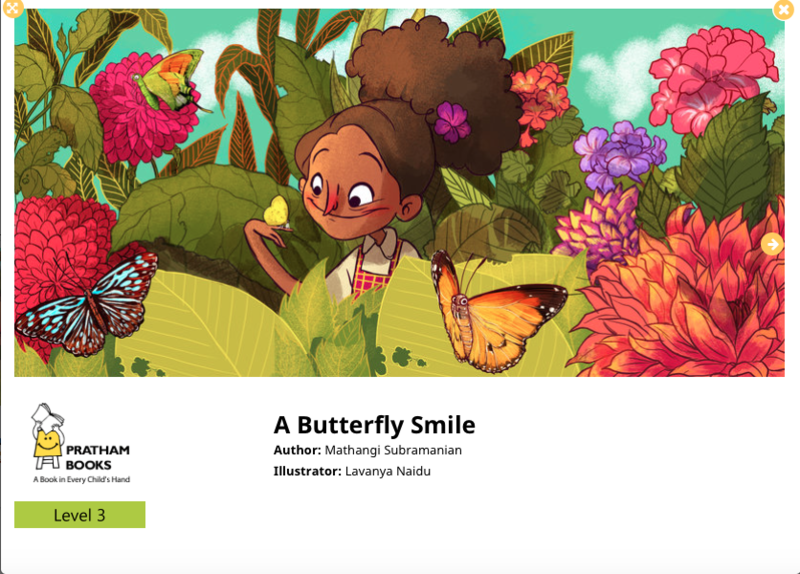Look Out for These STEM Titles in 2018!
Posted by Yamini Vijayan on February 26, 2018Last week, while I was at a government office on some personal work, I got a call from my colleague Zeba, also an editor at Pratham Books.
“Listen, I wanted to ask about the Oviraptor’s eggs,” she began.
And while I waited, got my photo taken and submitted heaps of documents to government officials, Zeba and I spoke softly and grimly about the finer details of the oviraptor, the T-rex and the mammoth. It was a strange experience, talking about extinct creatures in the middle of a dusty office where people were hanging around, trying to get all sorts of practical things done.
“Have you brought your Aadhaar card? Do you have 3 passport-size photos? Where are your bank statements?”
“Is the mammooth looking too tall?”
---
Around February every year, we’re in a great state of excitement and nervousness because the books we’ve spent months and months creating are finally being released to the world (that should explain our conversations about dinosaurs and mammoths). At Pratham Books, this is our third year of creating STEM picture books in a focussed manner. In three years, we have created over 50 STEM titles (more than 250 books!) for early readers in English, Hindi, Marathi, Kannada and Tamil. And we’re delighted that these are part of 300 STEM libraries that we have helped set up around the country.
So what do we have for you this year?
Our aim for this year was to continue creating simple and engaging picture books that explore STEM topics creatively. The idea, in essence, remains the same: to nurture curiosity in children.
We strongly feel that it's important to highlight the more playful aspects of math and science. So we’re very pleased with this amazing book on different kinds of animal tongues. We are also excited about these upcoming books: a book of patterns by Aditi Dilip in which the reader has to spot the odd one out, and a book on the concept of heavy and light by physicist Sukanya Sinha and Hari Kumar Nair.
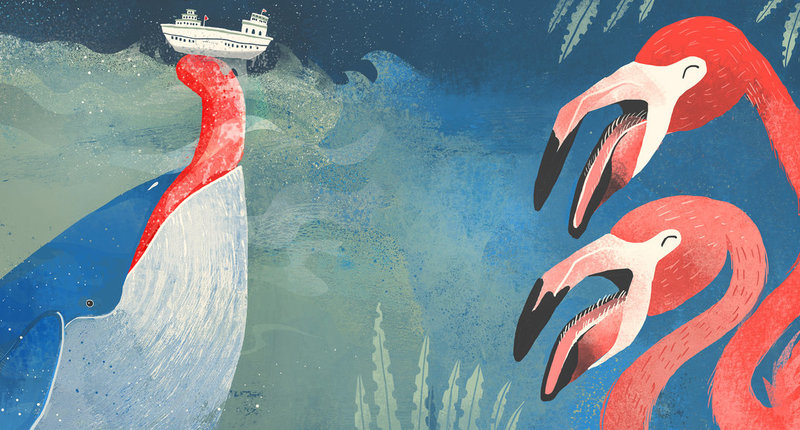
We do refer to the school curriculum as well though, and pick topics that have picture-book potential. This year, after sifting through a bunch of textbooks, we decided to make books on friction, magnets, bones, blood, time, division and electricity.
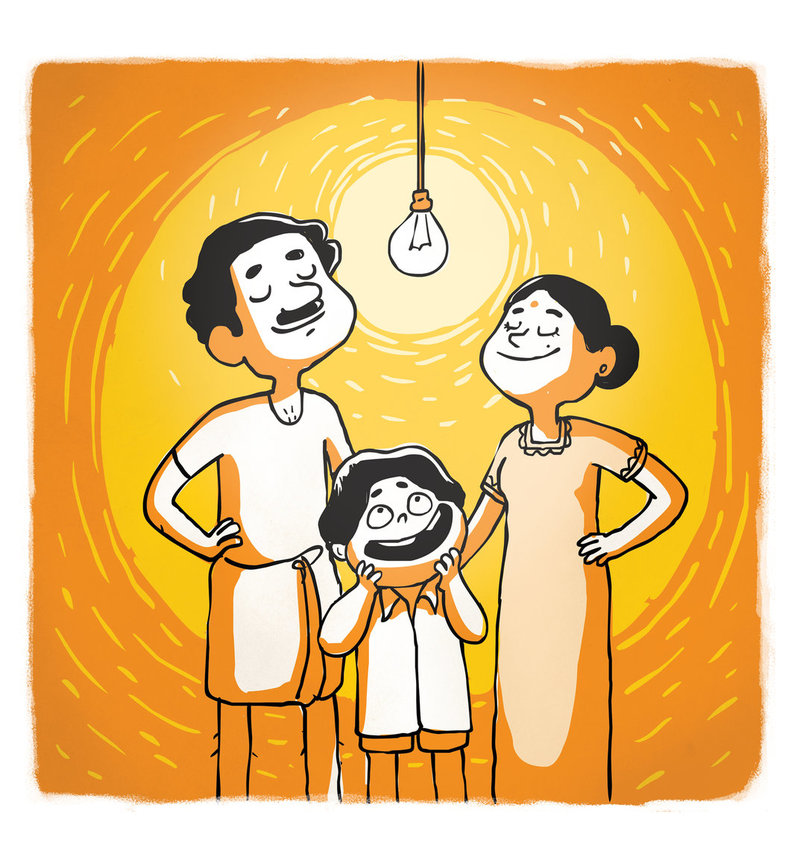
Have you noticed that children have a natural affinity for books about animals, birds and insects? Goby’s Noisy Best Friend explores the idea of symbiosis through the friendship between a goby fish and a pistol shrimp. This year, we have also made books on crabs, spiders and blue whales – all written by accomplished subject-matter experts and illustrated by artists who are incredible with getting all the intricate details right. And not to miss --- an enchanting island adventure by marine biologist Shreya Yadav and illustrator Sunaina Coelho which features flying fish, angler fish, firefly squid, plankton, and the moon – who makes a last-minute appearance!
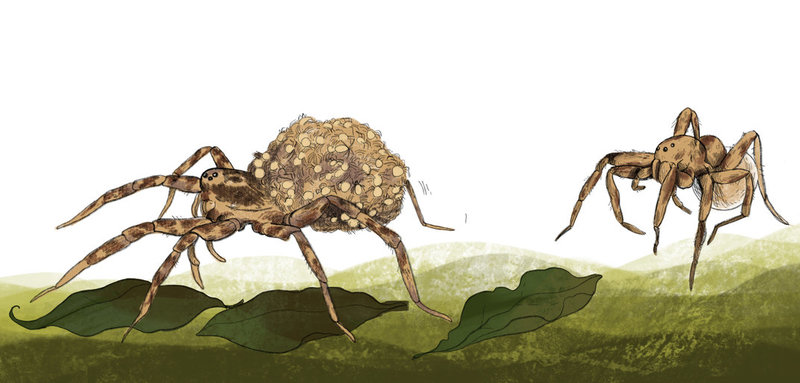
We’ve been told by our wise outreach team that children enjoy stories inspired by real life. So we are mighty pleased to have two short biographies based on the lives of two inspiring people: Anna Mani, a meteorologist who invented nearly a hundred weather gadgets (by Nandita Jayaraj and Priya Kuriyan), and Zakhuma, a forest guard and wildlife photographer (by Sejal Mehta and Barkha Lohia).
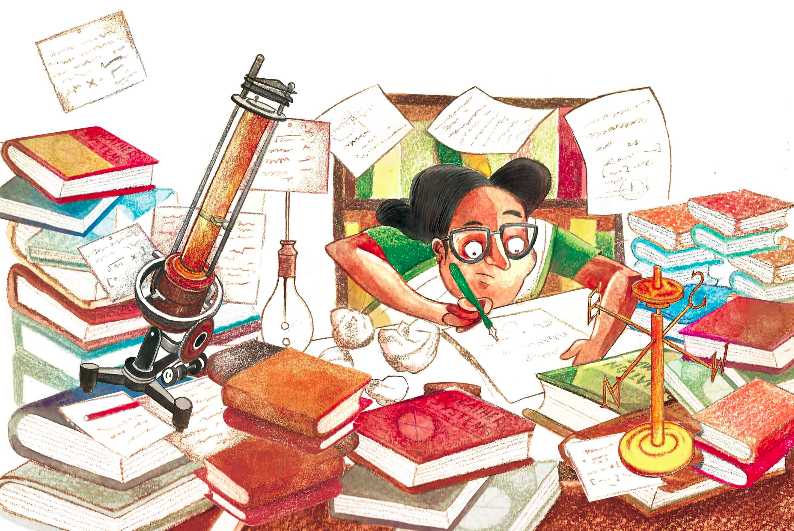
This year, we also wanted a couple of stories that demonstrate the importance of building and creating. Upcoming titles to look out for are: ‘The Grand Patch Up’ in which a girl uses her building-skills to make up with her friend, and ‘A Whistling Good Idea’ which is centred around the concept of a Rube-Goldberg machine.
Then there are the books that introduce children to interesting STEM careers. Shalini Srinivasan and Upamanyu Bhattacharyya’s book on water conservation features a spunky girl who aspires to be a sanitary engineer. Aashima Dogra and Fahad Faizal’s story on 'animals in space' features a woman who is always dreaming about exploring space. And, we finally have a book on paleontology (this has been on our wishlist) and all the marvellous things you get to do as a paleontologist.
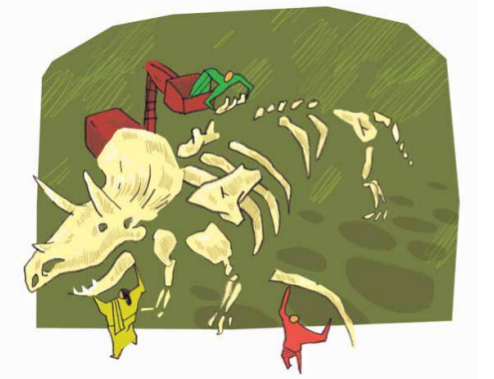
Stories around technology are always tricky because of how rapidly technology evolves. Don't forget to read Lazy Mama -- a story by Vidya Pradhan and Rohit Kelkar on Virtual Reality.
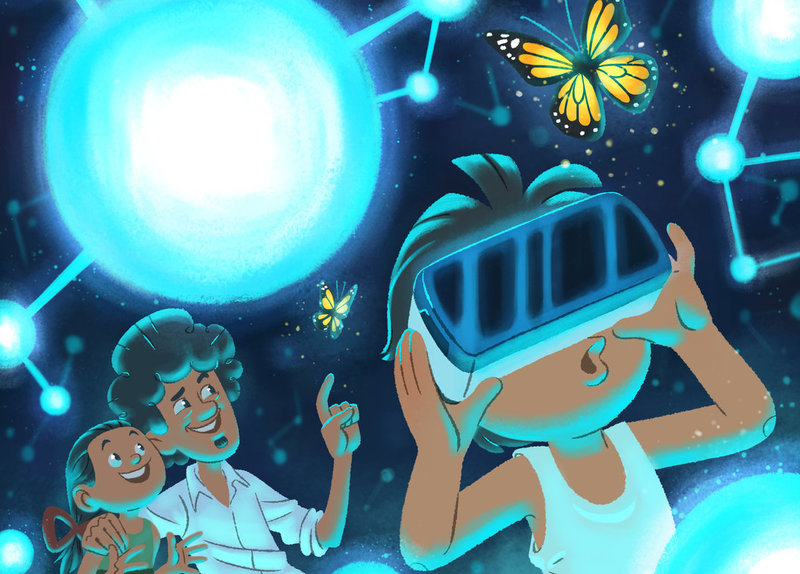
All these stories will be available on StoryWeaver in at least 5 languages. You can read, download and print them for free! You can also translate it to any language that you are fluent in.
Below are the titles we have already published this year. We’ll continue to update this last as we publish more books so that you can see all the titles in a single place.
5. Unni's Wish
7. Lazy Mama
(Yamini is an editor at Pratham Books. The development of these books has been supported by Oracle.)
Be the first to comment.Wings: Mathangi Subramanian writes about migration, butterflies and brave, young girls
Posted by Remya Padmadas on March 23, 2017

(Photo credit: Greshma Patel)
Mathangi Subramanian is an award winning author and educator who writes for the young and the young at heart. In 2016, her novel Dear Mrs. Naidu (Young Zubaan) won the 2016 South Asia Book Award and was shortlisted for the Hindu-Good Books prize. She currently lives in Delhi with her husband, her daughter, and many, many picture books. Her book 'A Butterfly Smile' is available to read, translate, download and share for free on StoryWeaver.
The thing I remember the most about the two years I lived in Bangalore is the construction. Everything was new, new, new: new flats, new hospitals and new offices. Every street seemed to have at least one cordoned off area where the air was thick with dust and the sidewalk was jagged and broken. People who grew up in Bangalore grumbled that the sleepy town they knew disappearing, brick by brick, block by block, swallowed up by glass walled skyscrapers sprouting from the pavement like steel flowers.
But I saw something different.
I didn’t just see new buildings. I saw new families. Mothers who buttoned men’s shirts over their saris, wrapped towels on their head to help balance buckets of rocks and gravel. Fathers who stopped to retie their dhotis before hoisting steel pans of gravel up to waiting hands cracked from sunlight and labour.
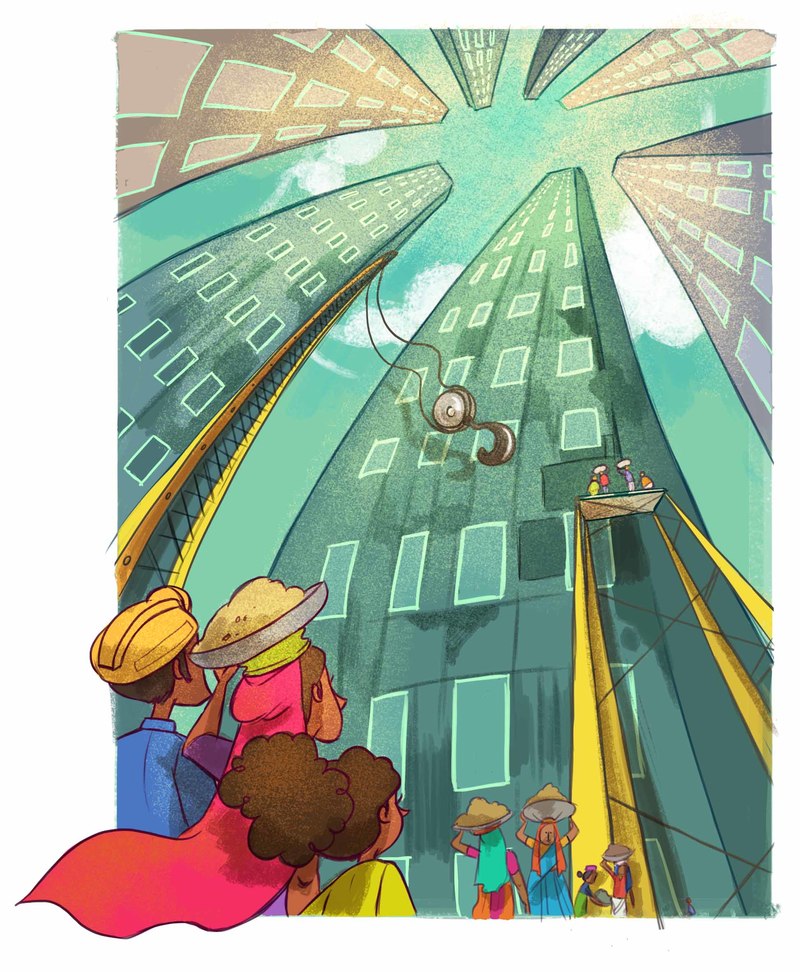
But most of all, I saw children. Babies playing in piles of sand, toddlers learning to walk on newly laid linoleum floors. Girls in faded school uniforms snapping laundry on lines strung between unfinished walls, boys eating roti off of dented metal plates in the shelter of unfinished doorways. Children who grow up shuttling between some of the city’s poshest buildings, and yet, were unsure of where their next meal is coming from.
Research repeatedly shows that in India, one of the primary reasons that parents migrate from villages to cities is for the schools. Some come from areas where education is subpar; others come from areas where there aren’t any schools at all.
Although children don’t have a say in their parents’ choices to migrate or stay, many that I’ve met over the years are thrilled at the chance to learn. But they are also terrified.
Remember your first day of school? You may have three, four, or five years old. Now imagine that first day as a seven, eight, or nine-year-old, sitting next to children who have already been learning to read and write and add and subtract for years before you even dreamed it was possible.
Kavya, the protagonist in “A Butterfly Smile,” is character I developed based on conversations I’ve had with migrant girls attending Bangalore schools where I once worked as a researcher. Like the girls I’ve met, Kavya is strong and hopeful and brave. But she is also grappling with moving to a city that labels her and her family as backwards, ignorant, and pitiful.
Just because Kavya has never gone to school, though, doesn’t mean she’s ignorant. Kavya, like many children, is observant and curious. She knows about butterflies because when she lived in her village, she paid attention to the world around her. She noticed life’s details.
In the city, we get used to tunneling our vision, to focusing only one what is in front of us so we can get through our day. So even though we see the traffic jam around a new construction that makes us late to work, we don’t see the butterflies hovering around our car windows, or the families building cooking fires in the shelter of a half-finished office building. We shut the bustle out just so we can get through our day.
For me, “A Butterfly Smile” is a story about migration. But it is also a story about the importance of looking around, and of seeing each other – insect and human, rich and poor, child and adult. Kavya is one of my favorite characters that I’ve created, because despite her uncertain world, she let has the courage to let life in.
After reading this story, I hope you will too.
You can read 'A Butterfly Smile' by Mathangi Subramanian and illustrated by Lavanya Naidu by clicking on the above image. The story has been translated to Tamil and French and will soon be available to read in Hindi, Marathi and Kannada.
Be the first to comment.A New Set of STEM Books That Will Fascinate and Delight
Posted by Remya Padmadas on December 28, 2016Most of StoryWeaver's digital-first books explore STEM (Science, Technology, Engineering, Math) topics in interesting and fun ways. Some of you may remember some of our amazing STEM titles from last year: 'How Old is Muttajji?', 'Jadav and the Tree-Place', 'Up World, Down World', 'Dum Dum-a-Dum Biryani!', etc. We’re happy to announce that these are also being printed early next year!
“This year, we’ve tried to create books that are simpler than last year, based on conversations with our outreach partners. Simpler does not mean easier, of course, and in many ways it has been more challenging. Fortunately, we’ve been working closely with some of the finest editors, writers, illustrators, art directors and translators who have helped us create a set of wonderful books. While the aim of each book is to inform and educate, the idea is also to nurture the innate sense of wonder in children and in turn, encourage them to explore further,” shares Yamini Vijayan, who anchors content creation for StoryWeaver.
Exciting ideas through exciting partnerships
This year, we hope to widen the lens through which children look at the world around them, with stories that explore topics like space, types of houses, trash, seasonal food, subtraction, evolution, simple machines and even toilets!
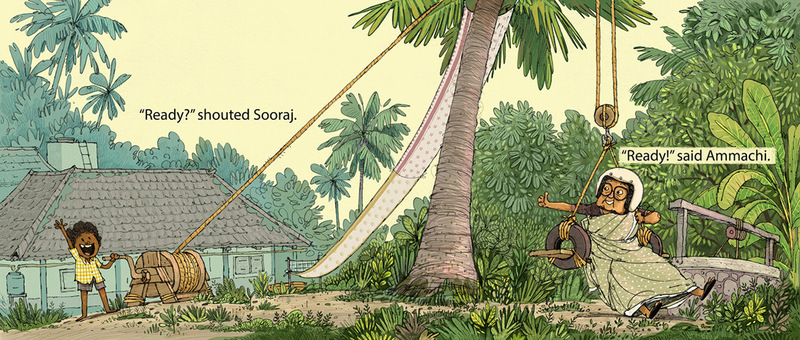
From author-illustrator Rajiv Eipe's book on simple machines
These books have been created in collaboration with 4 Guest Editors and 2 Art Directors. Award-winning author Roopa Pai has steered the books on math, Bijal Vachharajani – a journalist who writes on nature and the environment – has given shape and form to the books on environment, author-illustrator Vinayak Varma, former Editor and Art Director of Brainwave Magazine, has helped create fun science books and author-editor Payal Dhar has made technology and engineering appealing to young minds. With illustrations being such an integral aspect of these books, we were keen to involve experts in the field and so these books have been art-directed by talented illustrators Kaveri Gopalakrishnan and Vinayak Varma. We’re excited to say that some of the most promising authors and illustrators have contributed to the creation of these 20 titles.

Priya Kuriyan brings Neema to life in vivid colours in 'What's Neema Eating Today?' by Bijal Vachharajani
In Math, we have books on subtraction, patterns of similarity and dissimilarity, division and estimation. Needless to say, all these have been explained through simple stories that show how we use math in our everyday lives and that it isn’t restricted to our textbooks alone. At Pratham Books, we have always realized how important it is to have conversations about the environment to children. This year, we have chosen to focus on trash, seasonal food, migration and earthquakes. Themes in science that we have decided to ‘storify’ are simple machines, virology, evolution and the lives of gharials. We’re certain that early readers will become more enthusiastic about science after reading these enchanting stories. You’d think that children’s stories on technology and engineering can get a bit boring. Well, you’ll change your mind when you read our stories on space, wheels, flying, types of houses and toilets. In addition to these STEM books, we have two moving stories on emotional intelligence, one on anger and the other on perseverance.
Here's what we've digitally published so far:
Environment
What's Neema Eating Today? Neema loves to eat seasonally, and you will to now!
Science
Ammachi's Amazing Machines How simple can simple machines be? Ammachi's here to teach you!
Apu's Giant Earthquake: what's causing those tremors?
Sniffles, in which a girl spreads her cold during a football match.
Ghum-Ghum Gharial's Glorious Adventure, a young Gharial's adventure in the Ganga.
Math
One by Two Share some biryani and gulab jamuns and learn a thing or two about fractions!
More or Less? Need to Guess! How many sweet boxes do the wedding guests need? Guestimation to the rescue!
I Spy! How many children are left at a birthday party?
Same-same or different?, showing the friendship between a Sparrow and a Snake and also explaining the idea of sorting.
Technology
Gul in Space: a girl explores outer space.
In keeping with our commitment to creating good quality multilingual content for children, each of the 20 titles will be translated to Hindi, Marathi, Kannada and Tamil. (Plus, don’t forget, on StoryWeaver you can translate the stories to a language YOU’RE fluent in and help us spread the joy of reading to even more children.) The development of these 100 books (20 titles in 5 languages) has been supported by Oracle.
To say that we’re excited about these new stories is an understatement! We cannot wait to share them with readers, young and old. Happy reading!
Be the first to comment.